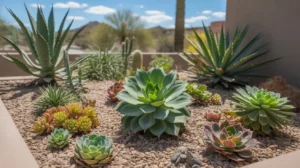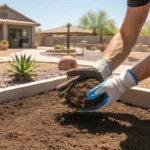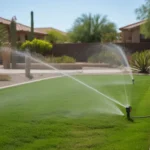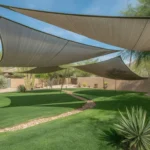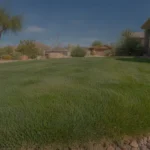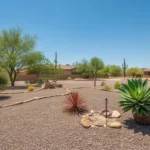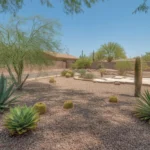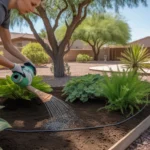Succulents have become a staple in many Gilbert yards, adding unique textures and low-maintenance charm to desert landscapes. With their ability to store water and thrive in hot, dry conditions, succulents are an ideal choice for local gardeners looking to create a beautiful, water-wise outdoor space. This guide will walk you through the essentials of succulent care in Gilbert, from choosing the right varieties to providing optimal growing conditions.
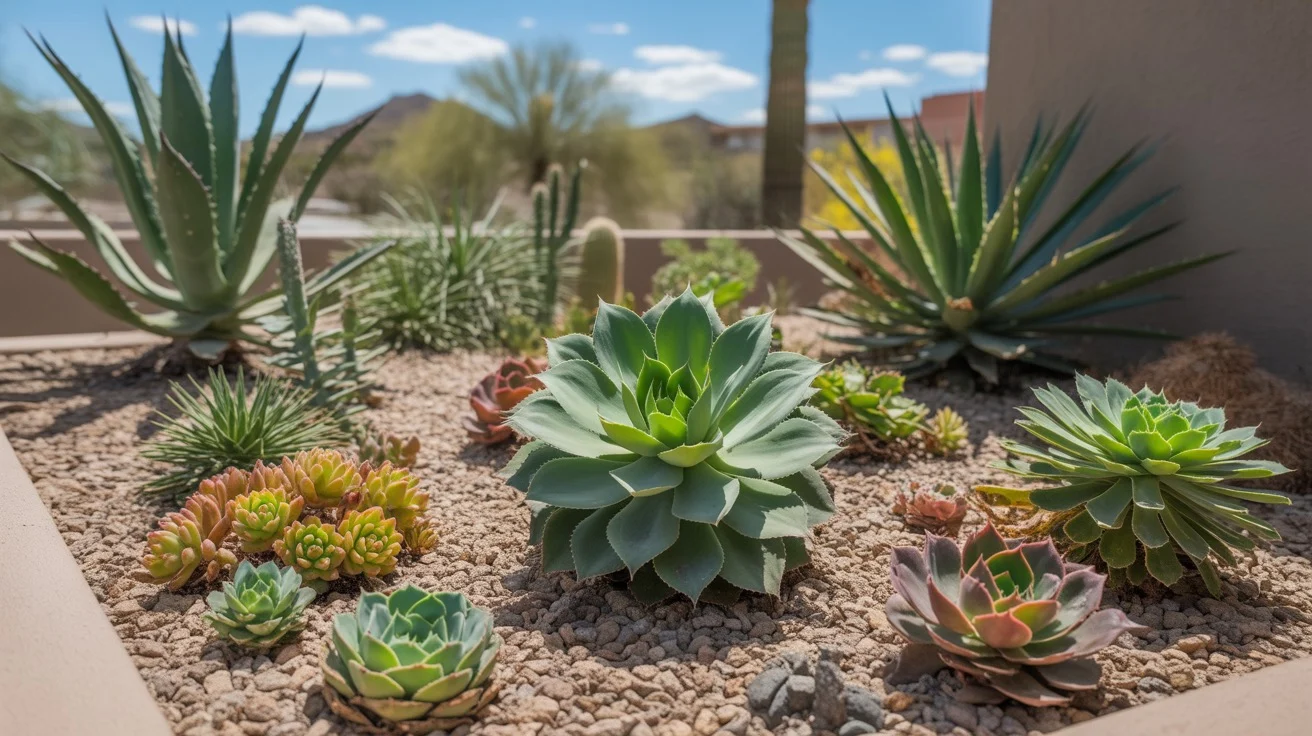
Selecting Succulent Varieties for Gilbert’s Climate
When planning your succulent garden, it’s important to choose varieties that are well-suited to Gilbert’s hot, arid climate. Some popular options include:
- Agave: Known for their striking rosettes and tall flower spikes, agaves come in a range of sizes and colors.
- Aloe: These medicinal plants feature fleshy, serrated leaves and vibrant blooms.
- Echeveria: Rosette-forming succulents with colorful, waxy leaves.
- Sedum: Low-growing, spreading succulents that work well as ground covers.
- Yucca: Architectural plants with sword-like leaves and towering flower stalks.
When selecting succulents, consider their mature size, growth habit, and sun requirements to ensure they’ll thrive in your yard. Mix and match different varieties to create visual interest and texture.
Local nurseries and garden centers like Berridge Nurseries and Whitfill Nursery are great resources for finding healthy, regionally-adapted succulents. Their knowledgeable staff can help you choose the best plants for your specific growing conditions and design goals.
Providing the Right Soil and Drainage
One of the most critical aspects of succulent care is providing well-draining soil. In their native habitats, most succulents grow in sandy or rocky soil that allows excess water to drain quickly, preventing root rot.
To replicate these conditions in your Gilbert yard, use a specialized cactus and succulent potting mix, or create your own by blending equal parts potting soil, coarse sand, and perlite or pumice. This mixture will ensure proper drainage and aeration around the roots.
When planting succulents in the ground, choose a site with good drainage and amend the native soil heavily with sand and gravel. If your yard has heavy clay soil, consider creating raised beds or mounds to improve drainage.
Watering and Fertilizing Succulents
Succulents are drought-tolerant plants that store water in their leaves, stems, and roots. As a result, they require less frequent watering than many other plants. However, finding the right balance is key to keeping your succulents healthy.
During Gilbert’s hot summer months, water your succulents deeply every 7-10 days, allowing the soil to dry out completely between waterings. In the cooler winter months, reduce watering to every 3-4 weeks. Always check the soil moisture before watering to avoid overwatering, which can lead to root rot.
Succulents generally don’t require much fertilizer, but you can give them a boost with a low-nitrogen, slow-release fertilizer once a year in the spring. Avoid over-fertilizing, as this can cause rapid, weak growth.
Providing the Right Amount of Sunlight
Most succulents thrive in full sun, making them well-suited to Gilbert’s bright, sunny climate. However, some varieties may benefit from light shade during the hottest part of the day, especially during the intense summer months.
When choosing a planting site, look for an area that receives at least 6 hours of direct sunlight per day. If you’re unsure about a specific variety’s sun requirements, check the plant label or consult with a local nursery professional.
If you’re growing succulents in containers, you can move them around your yard to ensure they receive the optimal amount of sunlight. Be sure to acclimate plants gradually to avoid sunburn when moving them from a shadier spot to full sun.
Protecting Succulents from Pests and Diseases
While succulents are generally low-maintenance and resistant to pests and diseases, they can still fall victim to a few common issues. Keep an eye out for the following:
- Mealybugs: These small, white, cottony insects can infest succulent leaves and stems. Remove them manually with a cotton swab dipped in rubbing alcohol, or use an insecticidal soap.
- Scale: These small, hard-shelled insects attach themselves to succulent stems and leaves, sucking out plant juices. Treat with horticultural oil or insecticidal soap.
- Root rot: Caused by overwatering or poor drainage, root rot can cause leaves to turn yellow and mushy. Remove affected plants from the soil, trim away any rotted roots, and replant in fresh, well-draining soil.
Regular inspections and prompt treatment can help keep your succulents healthy and free from pests and diseases. If you notice any unusual symptoms, consult with a local nursery or cooperative extension office for guidance.
Incorporating Succulents into Your Landscape Design
Succulents offer endless possibilities for creative landscape design in Gilbert yards. Here are a few ideas to get you started:
- Create a succulent rock garden by arranging plants among boulders, gravel, and other natural elements.
- Use succulents as border plants along walkways, patios, or garden beds.
- Plant a succulent tapestry by combining different colors, textures, and forms in a tightly-planted bed.
- Incorporate succulents into container gardens, alone or mixed with other drought-tolerant plants.
- Create a living wall or vertical garden with succulents planted in pockets or mounted on a trellis.
When designing with succulents, consider their mature size, growth habit, and color to create a balanced, visually appealing composition. Don’t be afraid to experiment and have fun with different combinations!
By following these succulent care tips and incorporating these versatile plants into your landscape design, you can create a thriving, water-wise oasis in your Gilbert yard. With their low-maintenance requirements and striking beauty, succulents are the perfect choice for local gardeners looking to embrace the desert aesthetic while conserving water and time.

